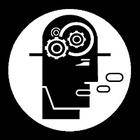Online Transcription Training Course for Stuttering and Fluent Speech
Part I Transcribing different sounds in English
Part III Identifying and marking dysfluencies
Part V Are you ready for some exercises?
Part VI Some real examples of dysfluencies and their transcriptions
Part VII Function and the content
Part VIII Identifying stuttering episodes in speech
Part I
Transcribing different sounds in English
Different Sounds in English
Newcastle University prepared a comprehensive course on the International Phonetic Alphabet (IPA). It has examples of individual sounds that you can listen and relate to as well as most of the articulatory properties of the various sounds. So, instead of re-inventing the wheel, please follow the link and enjoy the excellent course.
JSRU transcription system
In our research, we employ a machine readable transcription system instead of the standard IPA symbols which cannot be understood by computers. The JSRU (Joint Speech Research Unit) alphabet is a system developed for text-to-speech synthesis.
Part II
Extra markers
A. Word Boundaries
A Word Boundary is put in front of the phonetic transcription:
- A function word is preceded by a forward slash "/"
- A content word is preceded by a colon ":"
- Lesson and examples on word boundary markers
B. Syllable Boundaries
A Syllable Boundary is put in front of the phonetic transcription of each syllable. The markers are used to mark syllable boundaries as well as stress level of syllables.
- Lesson and examples on syllable boundary markers
C. Tone Unit boundaries
A simplified version of tone unit boundary is used. It just makes use of the basic punctuation marks: '.' (full-stop), ',' (comma), ';' (semi-colon), and '?' (question mark).
Part III
Identifying and marking dysfluencies
Follow this link to a page of examples on fluent and dysfluent speech we have collected and classified.
All dysfluencies are marked in the phonetic transcriptions.
- Lesson and examples on marking dysfluencies
Part IV
When transcribing
When transcribing the speech data, there are a few practical points one has to note.
- Conventions and hints in transcribing
Part V
Are you ready for some exercises?
Exercise 1
Exercise 2
Exercise 3
Exercise 4
Exercise 5
Exercise 6
Exercise 7
Part VI
Some real examples of dysfluencies and their transcriptions
Example 1
Example 2
Example 3
Example 4
Example 5
Example 6
Example 7
Example 8
Part VII
Function and the content
We have developed an explanation how stuttering starts in the speech errors that all children exhibit. According to this account, all children repeat simple words that precede more complex ones. This buys extra time to plan the difficult word that is coming up. Thus, in the phrase "I split it", fluent and stuttering children would anticipate difficulty on the word "split" because it starts with three consonants. So, they might say something like "I, I, I split it" to get more time to prepare it. Linguists divide words into function and content words. Simple words (like "I" in this example) are instances of function words. As speech errors on function words occur in all speakers speech, they are not considered a characteristic that leads to long term stuttering.
We have found that the speech of children who do not grow out of their stutter show a change in the pattern of their speech. They stop repeating function words and carry on and try and say the content word before they are ready. So, using the earlier example, they might say "I ssssplit it"). We have in this example a prolongation of the "s" sound but might also have a repetition of the first part of the word ("I s.s.s.split it"). The change in the pattern of stuttering is to part of the word rather than the whole word and onto the more complex class of word (the content word we mentioned above).
1. Introduction to Content and Function words in English
2. A passage classified into Content and Function Words
3. Exercises for classifying Content/Function Words...
Exercise 1
Exercise 2
Exercise 3
Exercise 4
Exercise 5
Exercise 6
Exercise 7
Exercise 8
Part VIII
Identifying stuttering episodes in speech
You are going to listen to some speech recording and you have to mark the stuttering episodes online.
You will need to have a sound card and speakers/headphones with your computer. You will also need a browser which supports Java 1.2 and the Java plugin 1.2.2 or above. If you don't have the plugin, the pages will actually put you through to the site to download it.
If you haven't done this yet, please try this basic technique in identifying sounds by listening to some sounds and responding to them.
Now try with real speech…
First Exercise in locating stuttering.
Second Exercise in locating stuttering.
Third Exercise in locating stuttering.
Fourth Exercise in locating stuttering.
 Close
Close


